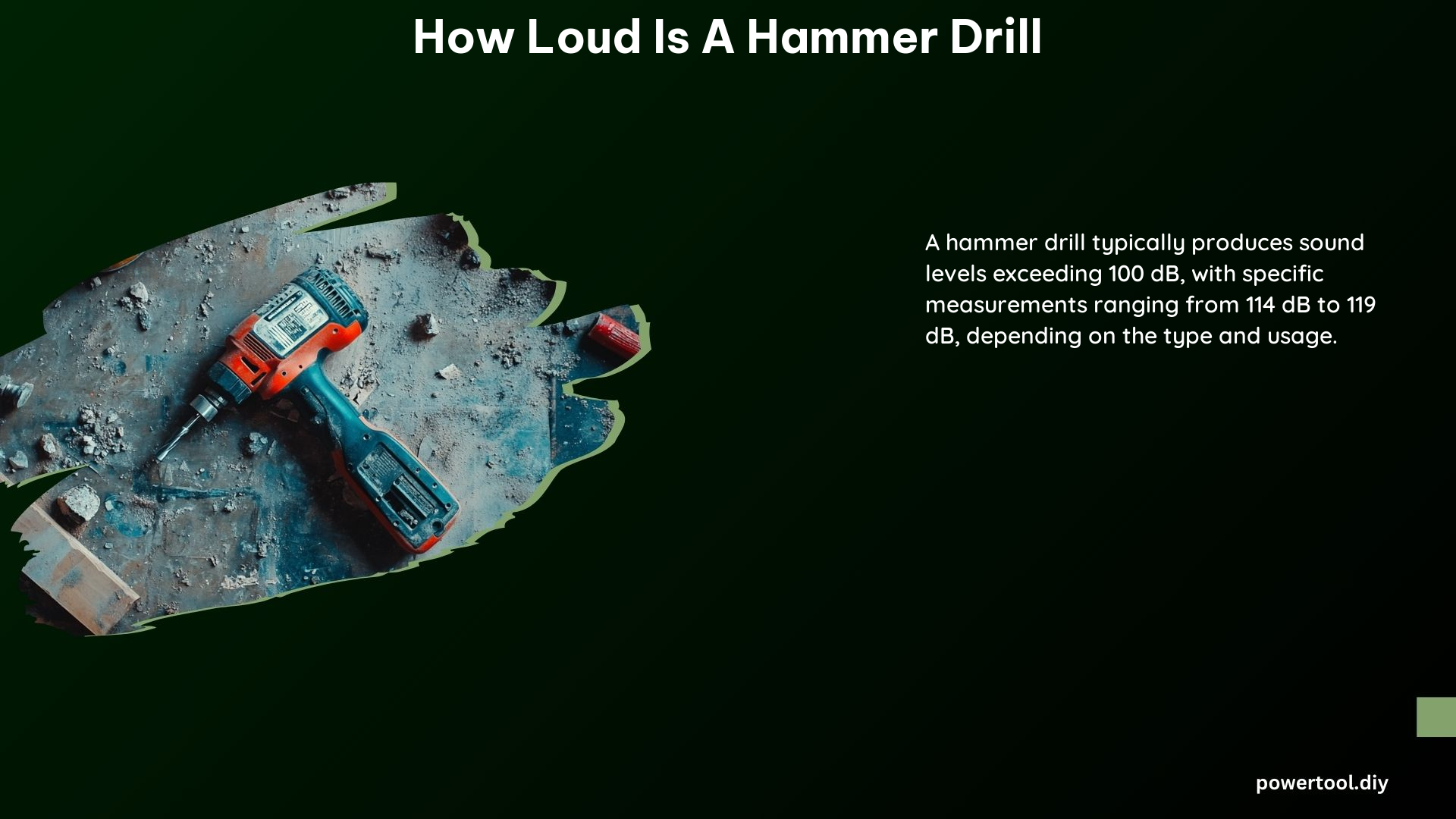A hammer drill is a powerful tool used for drilling into hard materials like brickwork, stonework, and concrete. Due to its additional “hammer” impacts that strike the chuck, it produces higher sound levels compared to a standard power drill. These increased sound levels can expose users to noise levels exceeding 100 decibels (dB), which can cause long-term hearing damage if appropriate protection is not worn.
Understanding the Decibel Levels of a Hammer Drill
The noise level of a hammer drill can vary depending on the specific model and usage. However, typical decibel levels for a hammer drill range from 114 dB to 119 dB, which is significantly higher than a standard power drill. To put this into perspective, a normal conversation is around 60 dB, and a ringing telephone is around 80 dB.
| Noise Source | Decibel Level (dB) |
|---|---|
| Normal Conversation | 60 dB |
| Ringing Telephone | 80 dB |
| Hammer Drill | 114 dB to 119 dB |
The decibel scale is logarithmic, meaning that a 10 dB increase represents a tenfold increase in sound intensity. This means that a hammer drill, which can produce noise levels between 114 dB and 119 dB, is approximately 1,000 to 3,160 times louder than a normal conversation.
The Risks of Hearing Damage from Hammer Drills

Yes, a hammer drill is loud enough to cause hearing damage. Prolonged exposure to noise levels above 85 dB can lead to permanent hearing loss. The Occupational Safety and Health Administration (OSHA) requires employers to provide hearing protectors when noise exposure levels equal or exceed an 8-hour time-weighted average sound level (TWA) of 85 decibels.
The effects of hearing damage from a hammer drill can be severe and long-lasting. Exposure to high-intensity noise can cause temporary or permanent hearing loss, tinnitus (ringing in the ears), and increased sensitivity to sound. These conditions can significantly impact an individual’s quality of life, making it difficult to hear and communicate effectively.
Recommended Hearing Protection for Hammer Drill Use
To prevent hearing damage when using a hammer drill, it is essential to use certified hearing protection devices, such as earplugs or earmuffs. These devices are designed to block the loud noises produced by the tool while still allowing users to remain connected to their smartphones for calls and music.
When selecting hearing protection, it is important to choose devices that are rated for the appropriate noise levels. The Noise Reduction Rating (NRR) indicates the level of noise reduction provided by the hearing protection. For example, earplugs with an NRR of 33 dB can reduce the noise level of a 119 dB hammer drill to a more manageable 86 dB.
It is also important to ensure that the hearing protection is worn correctly and consistently throughout the duration of the task. Improper use or removal of the hearing protection can negate the intended noise reduction benefits.
Technical Specifications and Considerations
When using a hammer drill, it is crucial to be aware of the following technical specifications and considerations:
- Noise Level Range: 114 dB to 119 dB
- Hearing Damage Threshold: 85 dB (8-hour TWA)
- Recommended Hearing Protection: Certified earplugs or earmuffs with an appropriate Noise Reduction Rating (NRR)
Additionally, it is important to consider the following factors that can impact the noise levels of a hammer drill:
- Drill Bit Size: Larger drill bits may produce higher noise levels due to increased vibration and impact forces.
- Material Being Drilled: Drilling into harder materials, such as concrete or stone, may result in higher noise levels compared to softer materials like wood.
- Drill Speed: Higher drill speeds can contribute to increased noise levels.
- Drill Maintenance: Well-maintained and lubricated hammer drills may produce lower noise levels compared to poorly maintained tools.
By understanding the technical specifications and considerations related to the noise levels of a hammer drill, users can make informed decisions about the appropriate hearing protection and safety measures to protect their hearing.
Conclusion
In conclusion, a hammer drill is a powerful tool that can produce noise levels ranging from 114 dB to 119 dB, which is significantly higher than the hearing damage threshold of 85 dB. Prolonged exposure to these high noise levels can lead to permanent hearing damage, making the use of certified hearing protection devices, such as earplugs or earmuffs, essential when operating a hammer drill.
By understanding the technical specifications and considerations related to the noise levels of a hammer drill, users can take the necessary precautions to protect their hearing and ensure a safe and productive work environment.
References
- YouTube: “How loud is the Milwaukee Gen #4 Hammer drill” (2023) – https://www.youtube.com/shorts/9oOFo6j5PvM
- ISOtunes: “Construction Hearing Protection | How Loud Is A Hammer Drill?” – https://isotunes.co.uk/pages/construction-hearing-protection-hammer-drill
- ISOtunes EU: “Construction Hearing Protection | How Loud Is A Hammer Drill?” – https://isotunes.eu/pages/construction-hearing-protection-hammer-drill
- Compliance Signs: “When Noise Levels are Excessive in the Workplace” – https://www.compliancesigns.com/blog/when-noise-levels-are-excessive-workplace/
